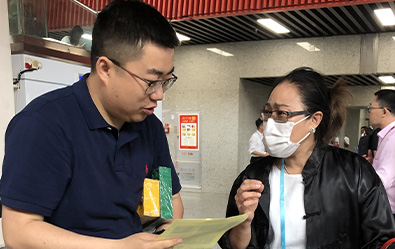loading...
- No. 9, Xingyuan South Street, Dongwaihuan Road, Zaoqiang County, Hengshui, Hebei, China
- admin@zjcomposites.com
- +86 15097380338
- Welcome to visit our website!
Exploring the Benefits of Walkway FRP for Sustainable Building Solutions
The Emergence of Walkway FRP A Sustainable Solution for Modern Infrastructure
In today’s evolving world, the need for sustainable and durable construction materials is more pressing than ever. Among various materials available, Fiber Reinforced Polymer (FRP) has emerged as a game-changer, particularly in the design and construction of walkways. As urban areas expand and infrastructure ages, the integration of Walkway FRP offers a promising solution to meet the demands of modern architecture while ensuring environmental sustainability.
What is Walkway FRP?
Walkway FRP refers to flooring systems constructed from a composite material made of a polymer matrix reinforced with fibers such as glass, carbon, or aramid. This innovative material is known for its lightweight properties, high strength-to-weight ratio, and impressive resistance to environmental challenges. The primary benefit of using FRP in walkways is its ability to withstand harsh conditions, such as UV exposure, moisture, and extreme temperature fluctuations, making it an ideal choice for both indoor and outdoor applications.
Benefits of Walkway FRP
1. Durability and Longevity One of the most significant advantages of Walkway FRP is its remarkable durability. Unlike traditional materials like wood or concrete, FRP does not warp, rot, or corrode over time. This longevity not only reduces the need for replacements but also minimizes maintenance costs, making it a cost-effective solution in the long run.
2. Lightweight Construction The lightweight nature of FRP allows for ease of installation, reducing labor and transportation costs. Contrasting with heavier materials, FRP can be easily handled and manipulated on-site, significantly speeding up the construction process. This is particularly beneficial in urban settings where time constraints and logistical challenges are commonplace.
walkway frp

3. Eco-Friendly Options In an era where environmental conservation is critical, Walkway FRP can be produced using recycled materials. This not only reduces waste but also contributes to a reduced carbon footprint. Moreover, the long life cycle of FRP reduces the frequency of replacements, contributing to less material waste over time.
4. Versatility in Design Walkway FRP is available in various colors, textures, and patterns, allowing architects and designers greater creative freedom. Whether for commercial, residential, or industrial projects, this material can be customized to fit the aesthetic requirements of the environment while maintaining functionality.
5. Safety Features Many Walkway FRP solutions incorporate slip-resistant surfaces, providing a safer option for pedestrians, especially in wet or icy conditions. Additionally, the non-conductive nature of FRP can be a significant advantage in areas where electrical safety is a concern.
Conclusion
As cities continue to grow and the demand for reliable infrastructure rises, the significance of innovative materials like Walkway FRP cannot be overstated. Its unique properties not only address the challenges associated with traditional construction materials but also align with the global movement towards sustainability and eco-friendliness.
The ongoing research and development within the field of FRP technology promise to unlock even more potential applications, further solidifying its place in the future of construction. By embracing Walkway FRP, urban planners and construction professionals can provide durable, safe, and aesthetically pleasing solutions that meet the needs of today while protecting the environment for future generations. Thus, the integration of Walkway FRP into modern infrastructure is not just an option; it is an imperative for creating resilient and sustainable urban landscapes.
-
The Rise of FRP Profiles: Strong, Lightweight, and Built to LastNewsJul.14,2025
-
SMC Panel Tanks: A Modern Water Storage Solution for All EnvironmentsNewsJul.14,2025
-
GRP Grating: A Modern Solution for Safe and Durable Access SystemsNewsJul.14,2025
-
Galvanized Steel Water Tanks: Durable, Reliable, and Ready for UseNewsJul.14,2025
-
FRP Mini Mesh Grating: The Safer, Smarter Flooring SolutionNewsJul.14,2025
-
Exploring FRP Vessels: Durable Solutions for Modern Fluid HandlingNewsJul.14,2025
-
GRP Structures: The Future of Lightweight, High-Performance EngineeringNewsJun.20,2025
